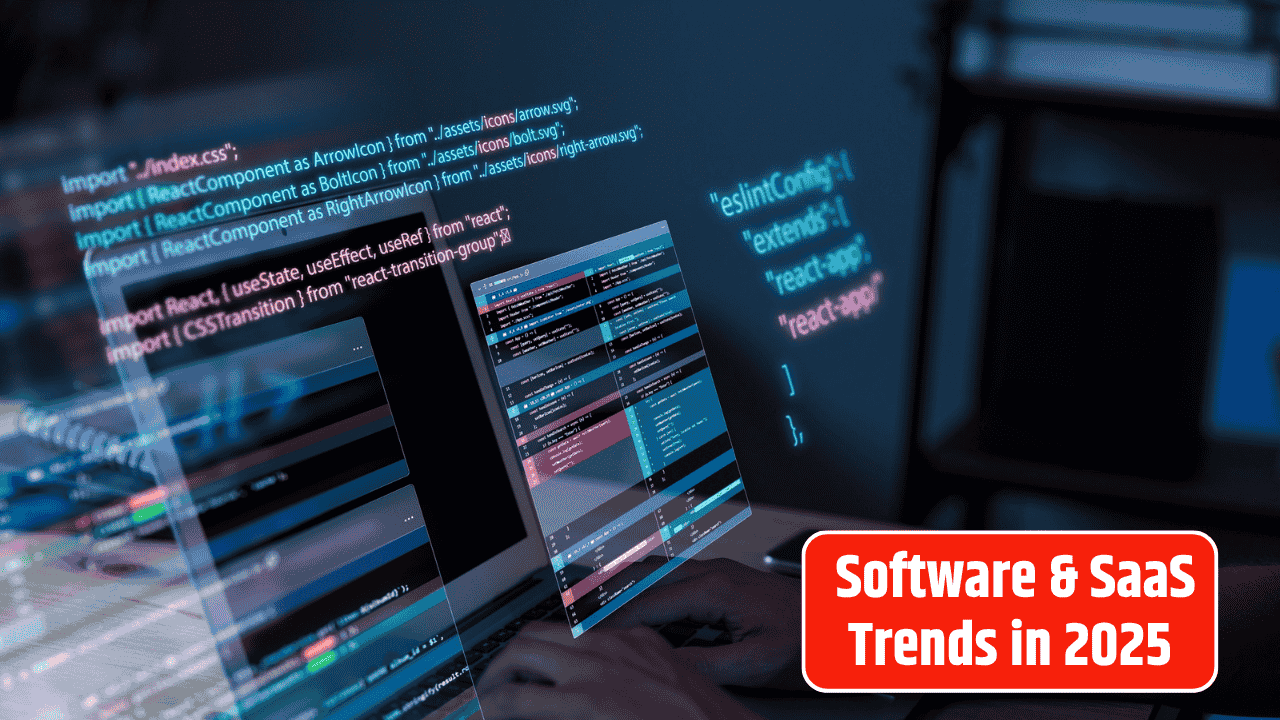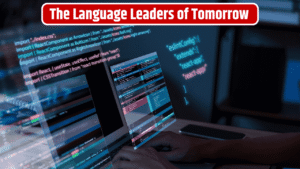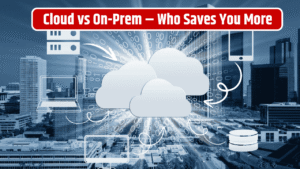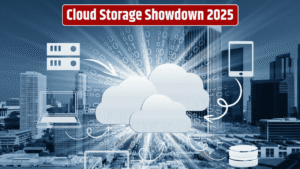You blink, and suddenly your Google Docs is rewriting your pitch deck like a stand-up comedian with a finance degree. Your Slack messages are being summarized by an AI intern you never hired. And your favorite SaaS tool? It now charges you in tokens, not dollars.
So what’s hot in software and SaaS right now? Let’s talk trends. But not in the robotic, “blockchain-this, AI-that” kind of way. Real trends. Stuff that’s already changing how we work, pay, and live.
1. AI-Native SaaS is Eating Everything
You’ve heard of “AI-powered” tools. Cute. That was so 2023.
Now we’ve got AI-native platforms—built from the ground up with large language models (LLMs) as their brain and soul. These aren’t just apps with a sprinkle of AI. They’re full-on copilots, decision-makers, and sometimes, your sassier work BFF.
Think:
| Old Way | AI-Native Way |
|---|---|
| Draft it yourself | AI drafts, you edit |
| Search settings | Just ask: “Where do I change billing?” |
| Clunky UI | Voice/text interface with personality |
Startups like Rewind, Notion AI, and Synthflow are pushing this wave hard.
2. Vertical SaaS is Getting Hyper-Specific
If general SaaS is the Whole Foods, vertical SaaS is the Indian kirana store that knows exactly what kind of papad your mom likes.
Niche is no longer a risk—it’s a strategy. Companies are building ultra-specific tools for just freight brokers, or just solo accountants, or just dental practices in rural Missouri. And guess what? They’re printing money doing it.
3. SaaS Pricing = Total Chaos (And That’s the Point)
Gone are the days of neat little “Starter/Pro/Enterprise” pricing pages. Now?
- Token-based billing
- AI-usage tiers
- Outcome-based pricing (you pay if it performs)
- Freemium tools that upsell based on emotion, not logic
It’s a mess. But it’s working. Why? Because billing is now personalized. You’re not buying features—you’re buying outcomes.
4. BYO LLM: Enterprises Want Custom AI Brains
Forget ChatGPT-as-a-service. Big companies want their own GPTs, fine-tuned on their own data.
We’re seeing:
- Internal LLMs trained on company docs, codebases, and Slack threads
- SaaS tools offering plug-and-play LLMs (like Cohere or Anthropic Claude integrations)
- AI agents built specifically for customer support, logistics, HR—you name it
Call it the GPT-fication of enterprise software.
5. Everything Has a Chat Interface Now (Even If It Shouldn’t)
From QuickBooks to Canva to Trello, everyone’s bolting a chat window onto their product. Some are brilliant—others are just annoying.
But the signal is clear: users want conversational UX. And in 2025, if your SaaS doesn’t “talk back,” you’re losing market share.
Even dashboards are dying. Who wants to click five tabs when you can just type:
“Show me sales by region, Q2 vs Q3.”
Boom. It’s a vibe.
6. Shadow IT? Nah, It’s Shadow SaaS Now
Remote teams are spinning up tools faster than IT can say “compliance.”
A random PM signs up for a new roadmap tool. The design team buys another Figma plugin. Legal? Never looped in.
Result: SaaS sprawl like never before.
This is fueling demand for SaaS governance tools like Torii and BetterCloud. Because when everyone’s using 57 apps, somebody’s gotta keep the receipts.
7. PLG 2.0: Now With a Splash of AI
Product-led growth (PLG) isn’t new. But in 2025, it’s been supercharged with machine learning.
Instead of pushing features, companies are using AI to:
- Predict when a user will churn
- Auto-nudge users to complete tasks
- Customize onboarding flows per user persona
It’s personalization at terrifying levels. You feel like the app “gets you.” Spoiler: it does.
8. SaaS as Middleware: Boring But Billion-Dollar
Some of the most profitable SaaS startups in 2025 aren’t sexy at all.
They’re building:
- API management layers
- Data syncing tools between systems
- AI orchestration layers
Nobody tweets about these. But CTOs love them. And VCs are throwing cash at them. Think: Zapier meets Snowflake meets Airflow… on steroids.
9. Privacy SaaS is a Power Play
With data privacy laws tightening (India’s DPDP Act, EU’s AI Act, etc.), compliance isn’t optional.
So we’re seeing a boom in:
- Consent management tools
- AI explainability software
- “Privacy by design” SDKs for devs
Startups in this space are the digital locksmiths of 2025. Quiet, essential, and increasingly profitable.
10. Open-Source SaaS is Back in Fashion
Thanks to distrust of Big Tech and rising SaaS prices, developers are turning to open-source alternatives again.
Examples?
- n8n for workflows
- Appsmith for internal tools
- Supabase as a Firebase alt
- Metabase for dashboards
These tools are customizable, community-driven, and avoid vendor lock-in. That’s a huge flex in 2025.
TL;DR Table: The 2025 SaaS Trend Sheet
| Trend | Why It Matters |
|---|---|
| AI-Native Platforms | Replaces tasks, not just assists |
| Vertical SaaS | Niche = $$$ |
| New Pricing Models | Maximizes LTV via psychology |
| BYO LLM | Custom AI = strategic moat |
| Chat Interfaces | Conversational UX is the new default |
| Shadow SaaS | Needs new governance tools |
| PLG 2.0 | AI boosts conversion & retention |
| SaaS Middleware | Boring = Big Money |
| Privacy SaaS | Compliance is table stakes |
| Open-Source SaaS | Flexibility + cost savings |
Wrapping Up (Before The Algorithm Does It For Me)
2025’s software scene is both thrilling and slightly unhinged. There’s innovation, sure—but also a bit of chaos. AI is everywhere. Pricing is unpredictable. User interfaces are turning into chatbots. And developers? They’re quietly shipping the next billion-dollar boring tool.
If you’re building, selling, or just trying to keep up with SaaS in 2025, remember this: the tools that win aren’t always the flashiest. They’re the ones that feel intuitive. Invisible. Inevitable.
And increasingly… a little too smart for their own good.
FAQs
Should startups avoid general-purpose SaaS now?
Unless you’ve got deep pockets or a unicorn-level idea, vertical SaaS is the safer bet in 2025.
Are traditional SaaS business models dying?
Not dying, just morphing. The old subscription model is evolving into usage-based, hybrid, and outcome-based pricing.
Is it too late to start an AI SaaS in 2025?
Not at all—but the bar is high. Novelty won’t cut it. Solve real problems or don’t bother.
How do privacy regulations impact SaaS growth?
They’re a growth limiter and an opportunity. Privacy-first features can be a huge selling point—if done right.
Are we at “peak SaaS”?
Nope. We’re just entering SaaS Season 2—and the script’s being written by AI.









